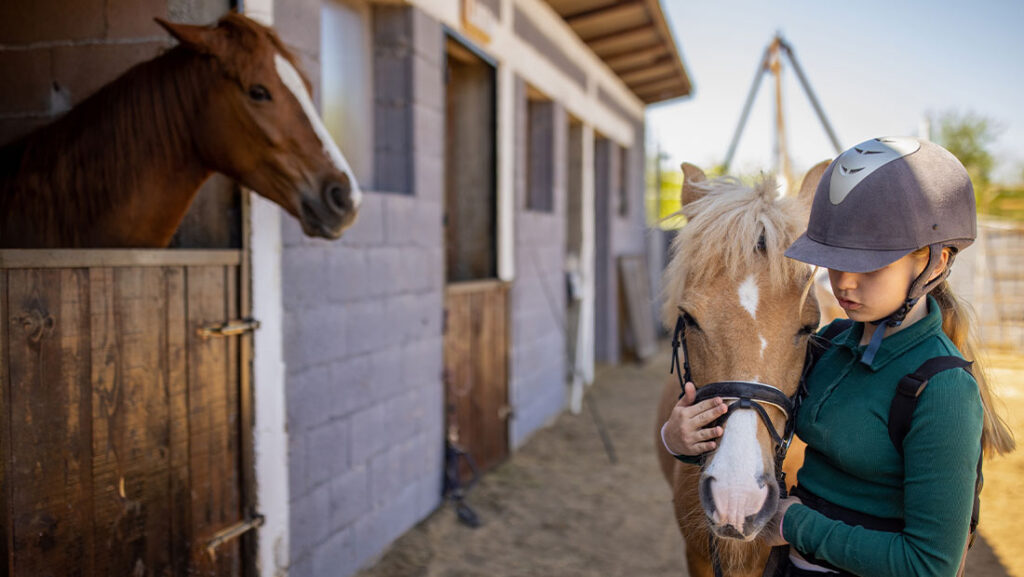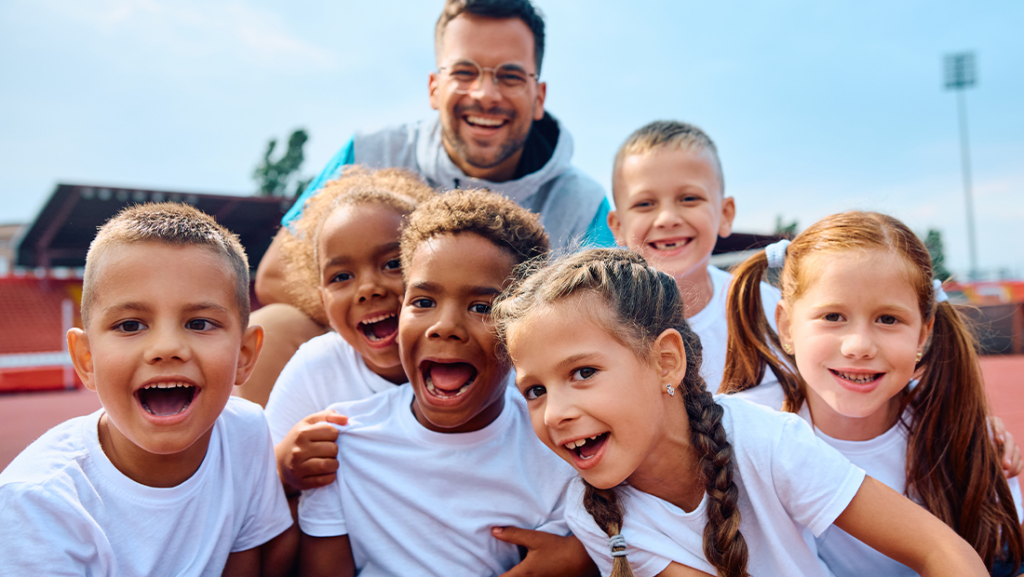Our Approach
to Prevention

Join our email list!
Stay connected with the latest news, resources, and tools from the U.S. Center for SafeSport and enjoy our quarterly e-newsletter, The Gameplan.
Check your email inbox to confirm your U.S. Center for SafeSport Gameplan newsletter subscription.
Teaching the skills to end abuse in sport
Prevention education is a vital part of our mission to end abuse in sport. Sport communities that invest in prevention know how to:
- Recognize the warning signs of abuse
- Apply strategies and policies that prevent risky situations
- Report inappropriate behavior
- Support survivors
Our Education Team is here to help you make prevention a priority.
Common Misconceptions
People sometimes dismiss the need for regular prevention education. Here are some examples of what we commonly hear:

“We care deeply about preventing abuse.”

“We have low rates of reports here, so we don't need additional training.”

“I trust our staff and coaches. I don't need to worry.”
Foundations of Prevention Education
Our live trainings, online courses, and resources are...
We acknowledge that many of our learners have experienced trauma, both in and out of sport. That is why we use the CDC and SAMHSA Guiding Principles to a Trauma-Informed Approach in our work.
We strive to create a safe and supportive learning environment by:
- Collaborating with survivors and communities affected by abuse
- Avoiding explicit language and imagery that may activate trauma for survivors
- Referring learners to support resources
- Helping those involved in the Center’s Response & Resolution process find information and support (Learn more about our Process Navigators)
We use public health, prevention, and behavioral science theories when creating our materials. Theories like the social-ecological model, the environmental safety model, and upstream theory help us decide what issues to address and how to approach them. For example, if we are trying to help people develop the skills to prevent bullying, we bring in social-emotional learning. This framework helps us teach people how to manage emotions, make responsible decisions, and maintain healthy relationships.
We design our educational programs and materials with assessment in mind. That means we are always asking “Does this work?” We ask our audiences for feedback and consult subject matter experts. We reference national studies and trends but use data with caution. It’s important to examine definitions and methodology when consulting research. For example, researchers often have different definitions for terms like “sexual violence.” We take that into consideration when consulting research.
Our research team collects and incorporates internal data to inform our work. For example, our Athlete Culture and Climate Survey helps us better understand athletes’ experiences of abuse. We also work with Center staff who investigate reports of abuse. They help make sure our content is accurate and provide valuable insight into how abuse happens in sport.
We think about the habits, values, and attitudes of our audiences when creating learning experiences. Our materials are developmentally appropriate and inclusive of different identities and perspectives. We are working to create more content that is specific to learners’ roles and sports.
We use backward design when creating live trainings and online courses. First, we identify learning outcomes, then we work backward. We decide how we will know learners met those goals. Then we design the learning activities that will lead to those outcomes. This helps us center the learners’ needs and make sure they reach learning goals.
We use various teaching styles and learning activities to address the problem of abuse in sport. Many of our learners must take our courses every year. This helps to reinforce key messages over time. We also offer supplemental trainings, courses, and resources that dive deeper into role-specific issues, like coaching athletes with disabilities.
We work to meet learners where they are:
- Stopping abuse before it happens (primary prevention)
- Preventing abuse from escalating or continuing after it has already occurred (secondary prevention)
- Preventing further harm by managing the long-term effects of abuse (tertiary prevention)
We firmly believe our resources should be available and accessible to everyone. This creates an inclusive and equitable learning experience. It also helps ensure we are reaching communities more at risk for abuse. We provide accessible materials and learning experiences in both physical and digital spaces.
- Visual accessibility: screen reader compatibility, color contrast, alt text, narration, descriptive language
- Hearing accessibility: transcripts, captioning, ASL interpretation, visual cues
- Motor accessibility: physical space accommodations, keyboard navigation
- Cognitive accessibility: targeted reading levels, plain language, consistent navigation
- Language accessibility: resources and learning experiences in many languages, including English, Spanish, and French
We follow the latest research, trends, and best practices in prevention education. Our materials are grounded in proven abuse prevention practices and learning theory. We aim to incorporate best practices in instructional design for our online courses, including simple navigation, plain language, engaging graphics, and relatable scenarios.
- Trauma-Informed
- Theory-Informed
- Data-Driven
- Context-Specific
- Comprehensive
- Accessible
- Current
We acknowledge that many of our learners have experienced trauma, both in and out of sport. That is why we use the CDC and SAMHSA Guiding Principles to a Trauma-Informed Approach in our work.
We strive to create a safe and supportive learning environment by:
- Collaborating with survivors and communities affected by abuse
- Avoiding explicit language and imagery that may activate trauma for survivors
- Referring learners to support resources
- Helping those involved in the Center’s Response & Resolution process find information and support (Learn more about our Process Navigators)
We use public health, prevention, and behavioral science theories when creating our materials. Theories like the social-ecological model, the environmental safety model, and upstream theory help us decide what issues to address and how to approach them. For example, if we are trying to help people develop the skills to prevent bullying, we bring in social-emotional learning. This framework helps us teach people how to manage emotions, make responsible decisions, and maintain healthy relationships.
We design our educational programs and materials with assessment in mind. That means we are always asking “Does this work?” We ask our audiences for feedback and consult subject matter experts. We reference national studies and trends but use data with caution. It’s important to examine definitions and methodology when consulting research. For example, researchers often have different definitions for terms like “sexual violence.” We take that into consideration when consulting research.
Our research team collects and incorporates internal data to inform our work. For example, our Athlete Culture and Climate Survey helps us better understand athletes’ experiences of abuse. We also work with Center staff who investigate reports of abuse. They help make sure our content is accurate and provide valuable insight into how abuse happens in sport.
We think about the habits, values, and attitudes of our audiences when creating learning experiences. Our materials are developmentally appropriate and inclusive of different identities and perspectives. We are working to create more content that is specific to learners’ roles and sports.
We use backward design when creating live trainings and online courses. First, we identify learning outcomes, then we work backward. We decide how we will know learners met those goals. Then we design the learning activities that will lead to those outcomes. This helps us center the learners’ needs and make sure they reach learning goals.
We use various teaching styles and learning activities to address the problem of abuse in sport. Many of our learners must take our courses every year. This helps to reinforce key messages over time. We also offer supplemental trainings, courses, and resources that dive deeper into role-specific issues, like coaching athletes with disabilities.
We work to meet learners where they are:
- Stopping abuse before it happens (primary prevention)
- Preventing abuse from escalating or continuing after it has already occurred (secondary prevention)
- Preventing further harm by managing the long-term effects of abuse (tertiary prevention)
We firmly believe our resources should be available and accessible to everyone. This creates an inclusive and equitable learning experience. It also helps ensure we are reaching communities more at risk for abuse. We provide accessible materials and learning experiences in both physical and digital spaces.
- Visual accessibility: screen reader compatibility, color contrast, alt text, narration, descriptive language
- Hearing accessibility: transcripts, captioning, ASL interpretation, visual cues
- Motor accessibility: physical space accommodations, keyboard navigation
- Cognitive accessibility: targeted reading levels, plain language, consistent navigation
- Language accessibility: resources and learning experiences in many languages, including English, Spanish, and French
We follow the latest research, trends, and best practices in prevention education. Our materials are grounded in proven abuse prevention practices and learning theory. We aim to incorporate best practices in instructional design for our online courses, including simple navigation, plain language, engaging graphics, and relatable scenarios.
Stay
Informed

Contact Us
We welcome your feedback on our live trainings, online courses, and resources. Email us at [email protected].

Join Our Newsletter
Sign up for our series, where we bridge the gap between prevention education theory with on-the-ground practice.
